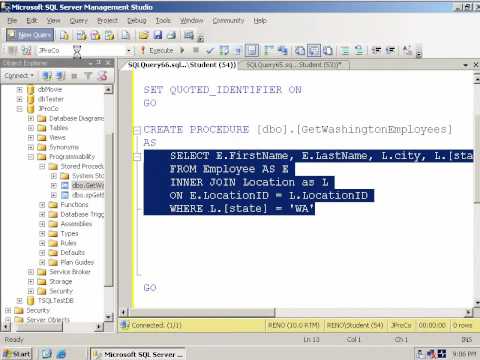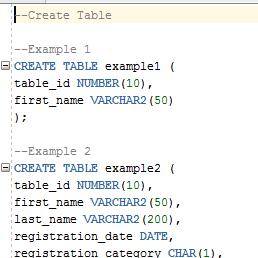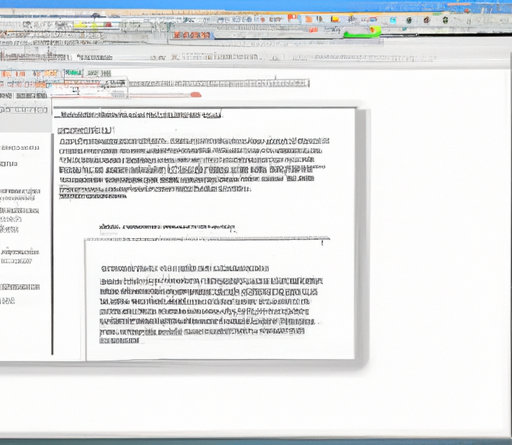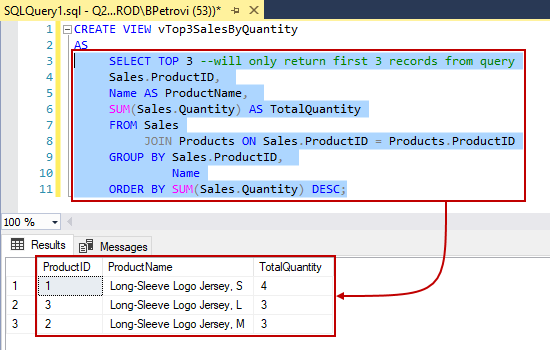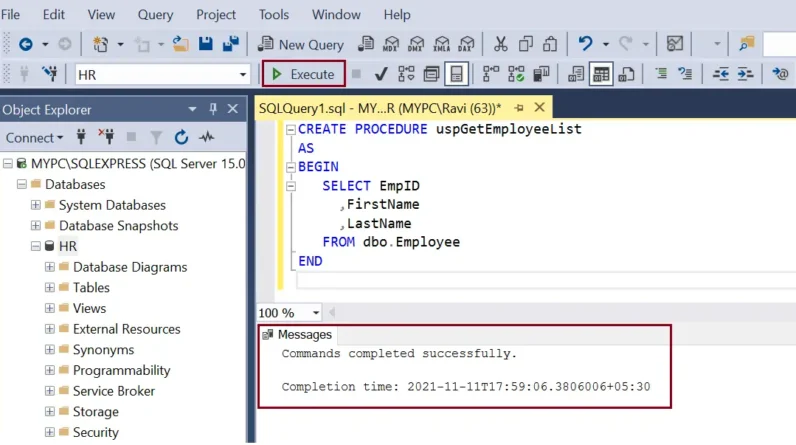
In this article, you will learn how to create or replace a stored procedure in SQL Server. We will guide you through the steps and explain the syntax involved, allowing you to confidently create or update procedures in your database. Whether you are new to SQL Server or looking to enhance your skills, this article will provide you with the knowledge you need to efficiently manage stored procedures. So, let’s get started and dive into the world of creating and replacing procedures in SQL Server.

Table of Contents
I. Introduction
In SQL Server, a stored procedure is a pre-compiled block of SQL statements that are saved and can be executed whenever needed. It is like a reusable script that can accept input parameters and generate output values. Stored procedures are widely used in database systems to improve performance, simplify code maintenance, and enhance security. In this article, we will explore the benefits of using stored procedures, the syntax for creating them, steps to create a stored procedure, and best practices for creating stored procedures.
II. What is a Stored Procedure?
A stored procedure is a database object that contains a group of SQL statements. It can be executed using a procedure name, and it can have input and output parameters. Stored procedures are stored in the database and can be accessed and executed by multiple users or applications. They provide a way to centralize and reuse SQL code, making it easier to manage and maintain complex database operations.
III. Benefits of Using Stored Procedures
Using stored procedures in SQL Server offers several benefits that can greatly enhance the efficiency and performance of database operations. Here are some key advantages of using stored procedures:
-
Improved Performance: Stored procedures are pre-compiled, which means they can be executed more quickly than ad-hoc queries. Once compiled, the execution plan is stored in memory for subsequent executions, resulting in faster access to data.
-
Code Reusability: Stored procedures can be called from various parts of a database application or even from different applications. This allows developers to reuse existing code rather than writing the same SQL statements repeatedly, reducing development time and effort.
-
Enhanced Security: Stored procedures can be used to enforce data access restrictions by granting permissions only for executing the stored procedure without directly providing access to underlying tables. This helps to protect sensitive data and ensure data integrity.
-
Simplified Maintenance: By encapsulating SQL code within stored procedures, it becomes easier to modify and maintain database logic. Changes can be made centrally in the stored procedure, eliminating the need to update the code in multiple places.
-
Transaction Management: Stored procedures allow developers to define transactions around a group of SQL statements. This ensures that all changes made within the procedure are either committed or rolled back as a unit, maintaining data consistency.
IV. Syntax for Creating a Stored Procedure
Creating a stored procedure in SQL Server involves specifying the procedure name, defining input parameters and return values (optional), and writing the logic using SQL statements. Here is the basic syntax for creating a stored procedure:
1. Basic Syntax
CREATE PROCEDURE procedure_name AS BEGIN -- Procedure logic END; 2. Parameters
Input and output parameters can be defined to pass values into the stored procedure or retrieve values from it. Parameters can have data types, such as int, varchar, datetime, etc., and can be marked as input or output parameters. Here is the syntax for defining parameters:
CREATE PROCEDURE procedure_name @parameter_name data_type [input/output] AS BEGIN -- Procedure logic END; 3. Return Values
Stored procedures can also return values using the OUTPUT keyword. The return values can be scalar or table-valued. Scalar return values are single values, while table-valued return values are result sets. Here is the syntax for defining return values:
CREATE PROCEDURE procedure_name @parameter_name data_type [input/output] AS BEGIN -- Procedure logic RETURN output_value; END; 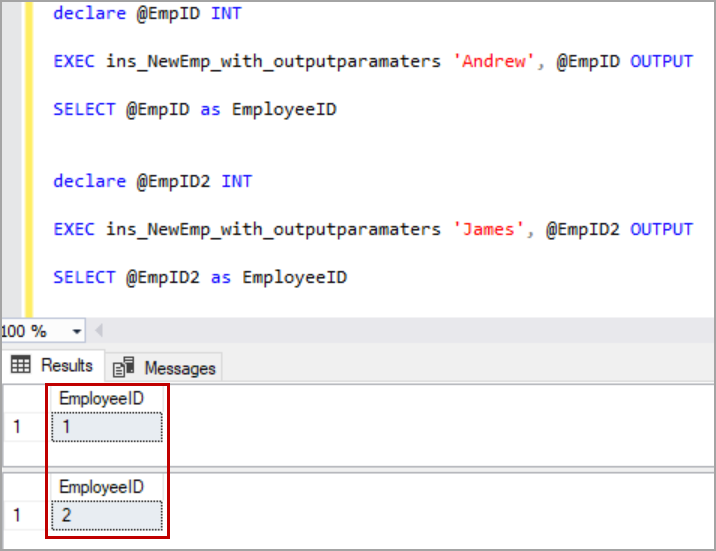
V. Steps to Create a Stored Procedure
Creating a stored procedure involves several steps. Let’s go through them one by one:
1. Decide the Procedure Name
Choose a descriptive name for your stored procedure that reflects its purpose. The name should be unique within the database.
2. Define the Input Parameters
Determine the input values that the stored procedure requires. Declare input parameters with appropriate data types and optional input markers.
3. Define the Output Parameters
If the stored procedure needs to return values, declare output parameters with appropriate data types and optional output markers.
4. Write the Procedure Logic
Write the actual SQL code that comprises the logic of the stored procedure. This can include any valid SQL statements, such as SELECT, INSERT, UPDATE, and DELETE.
5. Test the Procedure
Before finalizing the stored procedure, it is important to test it thoroughly to ensure it functions as expected. Execute the stored procedure with different input values and verify the output.
VI. Altering and Replacing a Stored Procedure
Sometimes, you may need to modify an existing stored procedure. SQL Server provides two options for altering or replacing a stored procedure:
1. Altering a Stored Procedure
To alter a stored procedure, you can use the ALTER PROCEDURE statement. This allows you to modify the procedure’s logic, input/output parameters, or return values without dropping and re-creating it.
ALTER PROCEDURE procedure_name AS BEGIN -- Updated procedure logic END; 2. Replacing a Stored Procedure
If you want to completely replace an existing stored procedure, you can use the DROP PROCEDURE statement followed by the CREATE PROCEDURE statement. This removes the old procedure and creates a new one with the same name.
DROP PROCEDURE IF EXISTS procedure_name; CREATE PROCEDURE procedure_name AS BEGIN -- New procedure logic END; 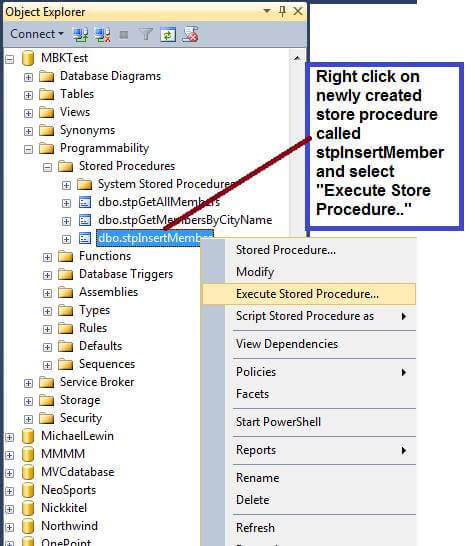
VII. Executing a Stored Procedure
Executing a stored procedure in SQL Server can be done with or without parameters. Let’s explore both scenarios:
1. Executing without Parameters
To execute a stored procedure without parameters, you can simply use the EXECUTE statement followed by the procedure name.
EXECUTE procedure_name; 2. Executing with Parameters
To execute a stored procedure with parameters, you need to provide the values for all input parameters. Use the EXECUTE statement followed by the procedure name, and pass the parameter values in the appropriate order.
EXECUTE procedure_name @parameter1 = value1, @parameter2 = value2, ...; VIII. Dropping a Stored Procedure
If you no longer need a stored procedure, you can drop it from the database using the DROP PROCEDURE statement.
DROP PROCEDURE IF EXISTS procedure_name; 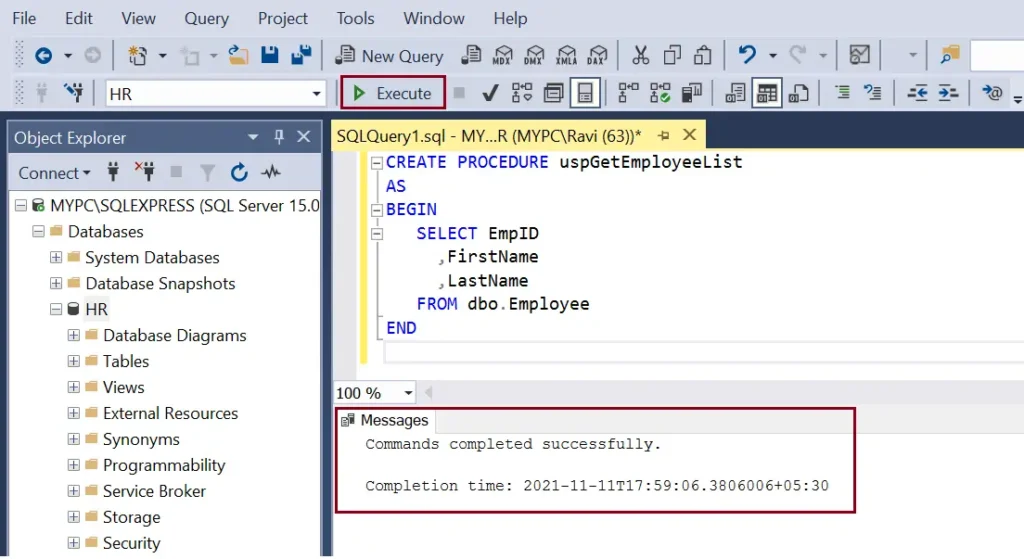
IX. Best Practices for Creating Stored Procedures
When creating stored procedures in SQL Server, it is important to follow best practices to ensure optimal performance and maintainability. Here are some best practices to consider:
-
Use meaningful names: Choose descriptive names that accurately reflect the purpose of the stored procedure.
-
Document the purpose: Include comments within the stored procedure to explain its purpose, parameters, and any important details.
-
Avoid excessive comments: While comments are helpful for documentation, excessive comments can make the stored procedure harder to read and maintain.
-
Validate input parameters: Validate input parameters to ensure they meet the required criteria and prevent SQL injection attacks.
-
Handle errors: Implement error handling mechanisms, such as TRY-CATCH blocks, to gracefully handle any potential errors that may occur during the execution of the stored procedure.
-
Avoid using dynamic SQL: Dynamic SQL can be harder to manage, debug, and secure. Whenever possible, use static SQL statements within the stored procedure.
-
Regularly review and optimize: Regularly review and optimize stored procedures for better performance. This can include analyzing execution plans, index tuning, and parameter optimization.
X. Conclusion
Stored procedures play a significant role in SQL Server database management by providing a way to efficiently store and execute SQL code. They offer numerous benefits, such as improved performance, code reusability, enhanced security, simplified maintenance, and transaction management. By following the syntax for creating stored procedures, the steps to create them, and best practices, you can develop efficient and reliable stored procedures to meet the needs of your SQL Server applications.
